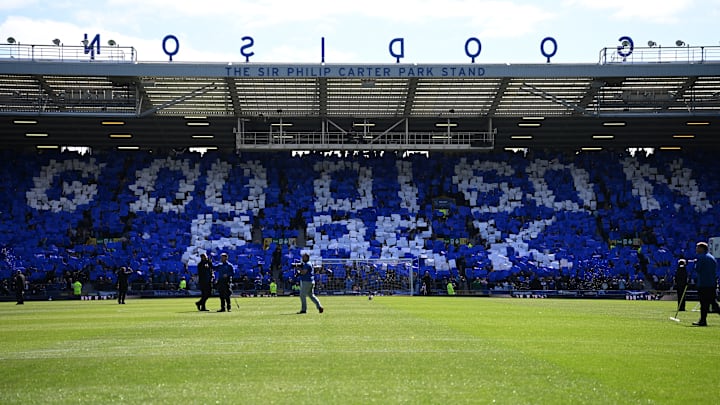Goodison Park has been a cornerstone of Everton Football Club for over 120 years, and it may soon begin an exciting new chapter as the potential future home of Everton Women.
While an official announcement has yet to be made, respected Everton commentator @ElBobble has reported that the Friedkin Group is progressing with advanced plans to relocate the women’s team from Walton Hall Park to a redeveloped Goodison Park.
David Moyes' side will bring the curtain down on their Goodison era with a final home fixture against Southampton, before making the long-anticipated move to the 52,888-capacity stadium at Bramley-Moore Dock next season.
Everton had previously outlined a plan for the ground, which envisioned the site being transformed into a mixed-use development 'legacy project' featuring housing, commercial spaces, and community facilities. However, the shift in focus toward maintaining the stadium as a football venue could signal a renewed commitment to growing the women’s side, both on and off the pitch.
Advancing the women’s game
Allocating Goodison Park to Everton Women would be a transformative step in growing the women's team. It would provide an opportunity to increase revenue, enhance visibility, and ensure compliance with any future Women’s Super League (WSL) stadium requirements.
The team’s current stadium falls short of the standards expected for a professional side, despite the average attendance (1,256) this season falling short of the capacity crowd. However, there’s an opportunity to invest in the player members that could eventually draw the large crowds to their new home.
Transitioning to a redeveloped, lower-capacity Goodison Park would mark a significant upgrade, placing Everton Women ahead of many rivals, including title contenders such as Chelsea, Arsenal, and Manchester United, in terms of regular infrastructure without relying on their male team’s stadium for the big fixtures.
Moreover, keeping Goodison Park active through regular matchdays would preserve the club’s historic connection to the L4 community.
As part of the broader strategy to develop the women’s game, Everton Women could become a central pillar of local engagement, supporting grassroots initiatives and inspiring the next generation of fans and players.
Mixed reactions from fans
In response to the news, Everton fans on X have shared mixed opinions. A significant number believe that the women’s team won’t be able to regularly fill Goodison Park, suggesting that demolition remains the most practical and cost-effective option.
Others, however, are more optimistic, supporting the idea of redevelopment, provided it is executed thoughtfully.
Still, concerns linger. Even with a reduced capacity of around 10,000 seats, many question whether manager Brian Sørensen’s side can attract enough fans to generate a consistent and compelling matchday atmosphere, one capable of acting as a “twelfth player” and driving the team forward.
Some supporters have expressed concerns that if Goodison Park continues to operate beyond this season—particularly with ongoing use of the Gwladys Street End and Park End Stand—the upcoming farewell fixture against Southampton could lose its emotional significance, with some calling it “irrelevant” or even “a myth.”
There’s a worry that keeping the ground active after the move to Bramley-Moore Dock may lessen the impact of what should be a historic send-off, especially once the initial excitement around the new stadium begins to fade.
Despite the negativity, there remains a strong sense of sentiment around preserving Goodison’s legacy.
Many fans on social media see the prospect of Everton Women moving into the ground as a “sensible option,” while some have even joked that the club should “sell it for £100 million” to the women’s team and reinvest the money into the men’s transfer budget.
Whatever the final decision for the Grand Old Lady, 18 May will remain etched in Evertonian hearts. As the club prepares to turn the page and embrace life at Bramley-Moore Dock, the memories, atmosphere, and legacy of Goodison Park will continue to resonate long into the future, in the hands of the women’s game or not.
